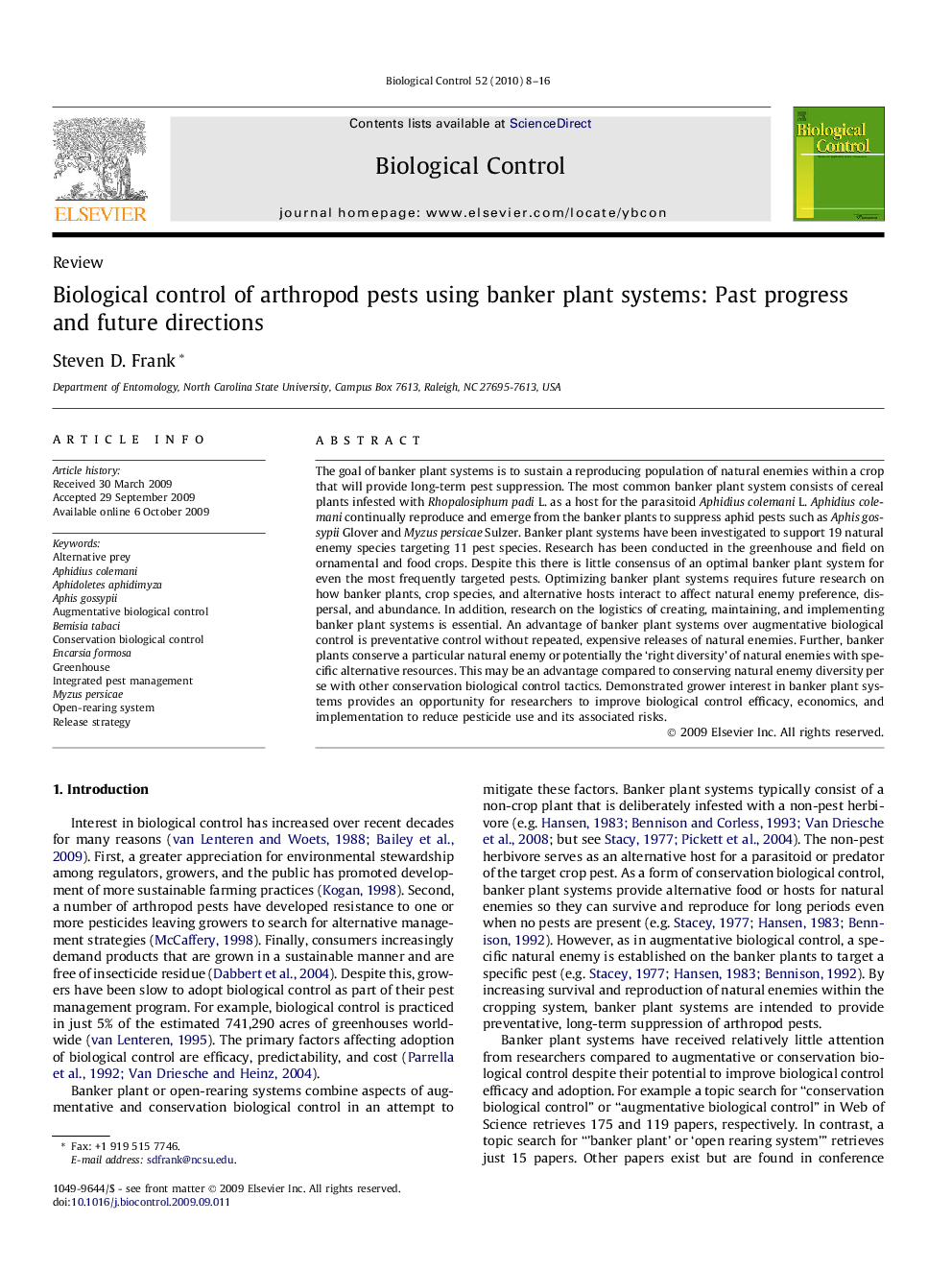| Article ID | Journal | Published Year | Pages | File Type |
|---|---|---|---|---|
| 4504618 | Biological Control | 2010 | 9 Pages |
The goal of banker plant systems is to sustain a reproducing population of natural enemies within a crop that will provide long-term pest suppression. The most common banker plant system consists of cereal plants infested with Rhopalosiphum padi L. as a host for the parasitoid Aphidius colemani L. Aphidius colemani continually reproduce and emerge from the banker plants to suppress aphid pests such as Aphis gossypii Glover and Myzus persicae Sulzer. Banker plant systems have been investigated to support 19 natural enemy species targeting 11 pest species. Research has been conducted in the greenhouse and field on ornamental and food crops. Despite this there is little consensus of an optimal banker plant system for even the most frequently targeted pests. Optimizing banker plant systems requires future research on how banker plants, crop species, and alternative hosts interact to affect natural enemy preference, dispersal, and abundance. In addition, research on the logistics of creating, maintaining, and implementing banker plant systems is essential. An advantage of banker plant systems over augmentative biological control is preventative control without repeated, expensive releases of natural enemies. Further, banker plants conserve a particular natural enemy or potentially the ‘right diversity’ of natural enemies with specific alternative resources. This may be an advantage compared to conserving natural enemy diversity per se with other conservation biological control tactics. Demonstrated grower interest in banker plant systems provides an opportunity for researchers to improve biological control efficacy, economics, and implementation to reduce pesticide use and its associated risks.
